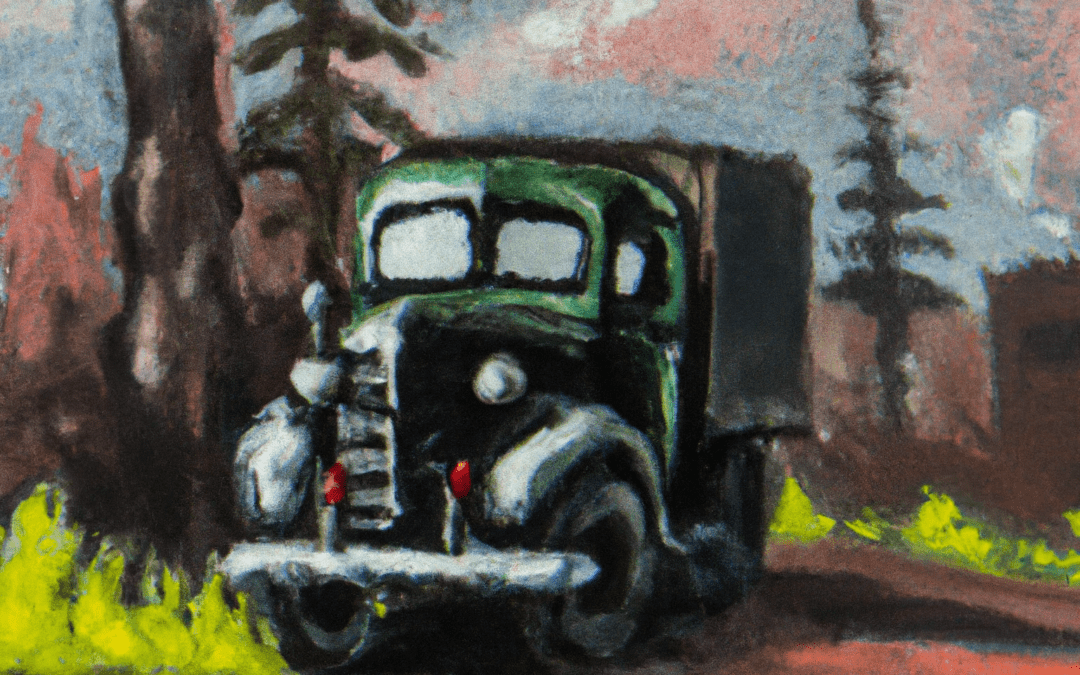
by Mike Buerger
AI at the Wheel Series
Written by ChatGPT, Administered by Michael Buerger
Car Hauling in the 21st Century
The American trucking industry has undergone significant changes in the 21st century, driven by technological advancements, environmental concerns, and shifts in consumer behavior. One area that has seen a particularly notable transformation is the car hauling sector. This article explores the history of the car hauling industry in the United States over the past two decades, highlighting key technological advances that have reshaped the sector and improved efficiency, safety, and environmental sustainability.
Transition to GPS and Electronic Logging Devices (ELDs)
The widespread adoption of GPS technology in the early 2000s revolutionized route planning and fleet management in the trucking industry, including car hauling. The use of GPS allowed for more efficient and accurate route planning, reducing fuel consumption and improving delivery times. Additionally, the implementation of Electronic Logging Devices (ELDs) has increased safety and compliance with Hours of Service (HOS) regulations by automatically recording a driver’s on-duty and driving time, minimizing the risks associated with driver fatigue.
Advancements in Trailer Design
Car haulers have benefited from advancements in trailer design, allowing for increased capacity and enhanced vehicle protection. Newer trailers feature hydraulic lifts and advanced loading systems, making it easier and safer to load and unload vehicles. Additionally, improvements in aerodynamics and weight distribution have led to increased fuel efficiency and reduced wear on tires and other components.
Autonomous and Semi-Autonomous Driving Technologies
The development of autonomous and semi-autonomous driving technologies has the potential to significantly impact the car hauling sector. Features such as adaptive cruise control, lane-keep assistance, and collision avoidance systems are already being integrated into commercial trucks, enhancing safety and reducing driver workload. In the future, fully autonomous trucks could revolutionize the industry, potentially reducing labor costs, increasing efficiency, and improving overall safety.
Electric and Alternative Fuel Vehicles
The push for greener transportation has led to the development of electric and alternative fuel trucks. Tesla’s unveiling of the all-electric Semi truck in 2017, for example, showcased the potential for electric long-haul vehicles, promising lower operating costs and reduced emissions. While widespread adoption of electric trucks in the car hauling sector may still be a few years away, there has been a growing interest in alternative fuel options, such as compressed natural gas (CNG) and liquefied natural gas (LNG), to reduce the sector’s environmental footprint.
Internet of Things (IoT) and Telematics
The integration of IoT and telematics into the car hauling industry has improved fleet management, maintenance, and safety. With real-time tracking and monitoring of vehicles, fleet managers can make data-driven decisions to optimize routes, reduce fuel consumption, and monitor driver performance. Digital platforms and Load Management Systems (LMSs) greatly improve carrier administrative efficiency. Additionally, predictive maintenance enabled by telematics can help identify potential issues before they become major problems, reducing downtime and repair costs.
Conclusion
The car hauling sector has evolved significantly in the 21st century, driven by technological advancements that have improved efficiency, safety, and sustainability. As the trucking industry continues to embrace new technologies, the car hauling sector will likely continue to innovate and adapt, shaping the future of vehicle transportation in the United States.

by Mike Buerger
AI at the Wheel Series
Written by ChatGPT, Administered by Michael Buerger
Introduction
The American trucking industry has a rich and storied history, dating back to the early 20th century. Over the years, it has played a crucial role in shaping the country’s economic landscape and has been instrumental in connecting various industries and businesses. In this article, we’ll take a look at the evolution of the American trucking industry before the dawn of the 21st century, with a particular focus on car hauling.
Early Beginnings: The 1900s to the 1920s
The first motorized truck was built in 1896 by the German inventor Gottlieb Daimler. However, it wasn’t until the early 1900s that the American trucking industry started to take shape. With the mass production of the Ford Model T in 1908, automobiles became more accessible to the general public, creating a demand for trucks to transport them.
The early trucking industry primarily focused on delivering goods in local markets. As the need for transporting goods over longer distances grew, the trucking industry expanded its operations. The Federal Aid Road Act of 1916 and the Federal Highway Act of 1921 greatly influenced the development of the American trucking industry, as they provided funding for the construction and maintenance of a nationwide highway system.
Car hauling emerged as a specialized segment within the trucking industry, as the demand for transporting automobiles increased. In the 1920s, the first car carriers were designed to transport vehicles using a combination of flatbed trailers and wooden ramps. These early car haulers were limited in capacity, often carrying just two or three vehicles at a time.
The Great Depression and World War II: The 1930s to the 1940s
The Great Depression in the 1930s had a profound impact on the American trucking industry. As businesses struggled, demand for trucking services declined. However, the industry managed to stay afloat due to the continued need for essential goods transportation.
During World War II, the trucking industry played a vital role in supporting the war effort. Trucks were used extensively for transporting military equipment, supplies, and personnel. The industry gained significant recognition, and the importance of a reliable and efficient transportation network became evident.
In the realm of car hauling, technological advancements in the 1940s led to the development of larger and more efficient car carriers. The introduction of steel trailers allowed haulers to carry up to six vehicles at once, significantly increasing productivity and reducing transportation costs.
Post-War Expansion and Deregulation: The 1950s to the 1980s
The post-World War II era marked a period of rapid expansion for the American trucking industry. The construction of the Interstate Highway System in the 1950s revolutionized the transportation landscape, enabling trucks to travel greater distances at faster speeds. The trucking industry experienced tremendous growth, and by the 1960s, it had become the primary mode of freight transportation in the United States.
Car hauling continued to evolve during this period, with the introduction of specialized car carrier trailers. In the 1950s, the double-decker trailer was introduced, allowing haulers to transport up to ten vehicles at once. These trailers featured hydraulic ramps and adjustable decks, making it easier to load and unload vehicles.
The Motor Carrier Act of 1980 brought about significant deregulation in the trucking industry. This legislation eliminated many of the restrictions that had been placed on trucking companies, enabling them to operate more freely and efficiently. Deregulation led to increased competition, lower freight rates, and a surge in the number of trucking companies.
Technological Advancements and Industry Challenges: The 1980s to the 1990s
The 1980s and 1990s witnessed significant technological advancements that influenced the American trucking industry. Innovations such as computerized routing systems, satellite tracking, and electronic data interchange (EDI) improved efficiency, communication, and overall productivity. Trucks became more fuel-efficient and environmentally friendly, with the introduction of diesel engines and advancements in aerodynamic design.
Car hauling also benefited from these technological advancements. In the late 1980s, the use of hydraulic liftgates became more prevalent, allowing for easier loading and unloading of vehicles. This technology enabled car haulers to carry up to twelve vehicles, further increasing their capacity and efficiency. Furthermore, computerized systems facilitated better communication between drivers, dispatchers, and customers, resulting in improved scheduling and reduced transit times.
Despite these advancements, the trucking industry faced significant challenges in the late 20th century. The rise of globalization led to increased competition from foreign trucking companies and other modes of transportation, such as rail and air freight. Additionally, the industry grappled with a shortage of qualified drivers, high turnover rates, and rising fuel costs.
Conclusion
The evolution of the American trucking industry before the 21st century is a testament to its resilience, adaptability, and continuous drive for innovation. From its humble beginnings in the early 1900s to its rapid expansion in the post-World War II era, the trucking industry has been a vital part of the American economy.
Car hauling, as a specialized segment within the trucking industry, has mirrored this evolution, adapting to the changing needs of the automotive market and embracing technological advancements. The journey of the trucking industry is marked by both triumphs and challenges, and its story serves as a reminder of the importance of a robust transportation network in a thriving nation.
As we move forward into the 21st century, the trucking industry and car hauling will undoubtedly continue to evolve, facing new challenges and embracing emerging technologies. However, the lessons learned from their rich history will remain invaluable in navigating the road ahead.

